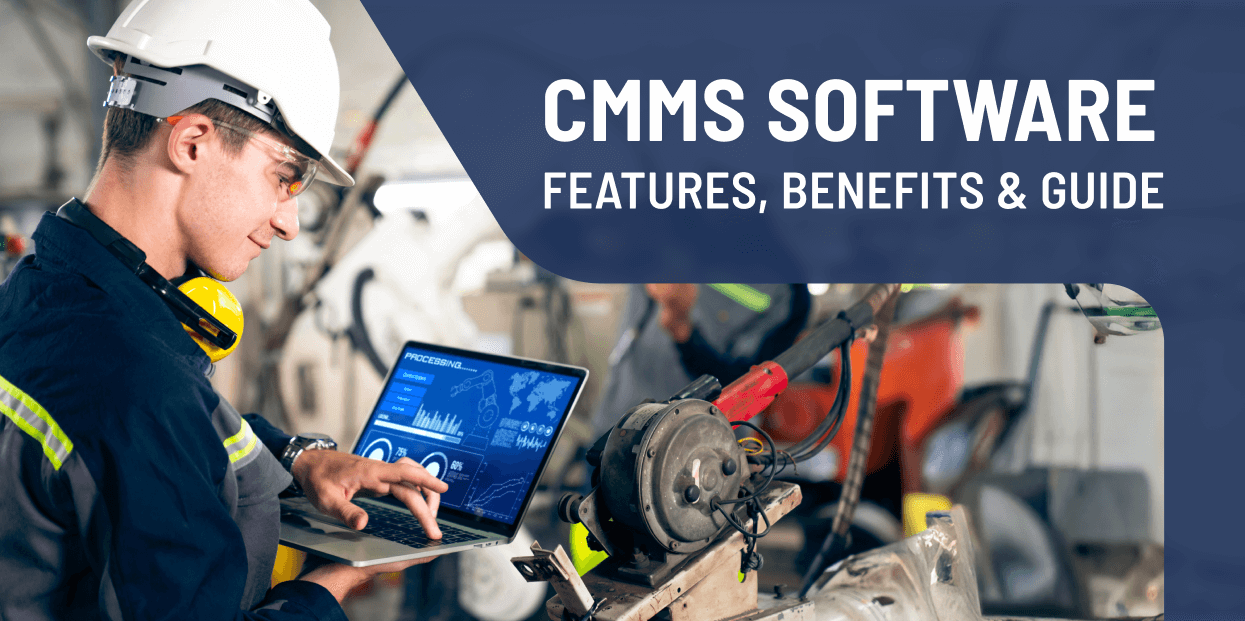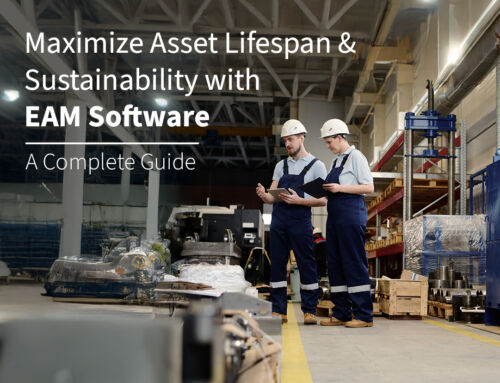Unexpected equipment breakdowns cost time, money, and productivity. That’s where CMMS software (Computerized Maintenance Management System) plays a vital role. This powerful maintenance management software offers a smarter, more efficient way to manage day-to-day maintenance operations — automating work orders, tracking assets, and reducing downtime.
This article provides a comprehensive overview of how CMMS software supports maintenance teams in reducing downtime, cutting costs, and improving asset performance.
Core Features of CMMS Software
CMMS software features are the essential tools that help businesses manage maintenance tasks, assets, and spare parts efficiently.
Work Order Management
CMMS enables users to create, assign, and track work orders seamlessly. This streamlines task management across maintenance teams, ensures accountability, and helps prioritize urgent issues — all within a single platform.
Preventive Maintenance Scheduling
Automates maintenance schedules based on time intervals or asset usage, preventing unexpected failures, reducing downtime, and maximizing equipment uptime.
Asset Maintenance Tracking
Provides real-time visibility into asset conditions and performance across sites. This improves decision-making, reduces reactive maintenance, and extends equipment life.
Inventory & Spare Parts Management
Keeps track of spare parts and inventory levels, ensuring required materials are always available without overstocking. Linking inventory directly to work orders eliminates delays and reduces costs.
Compliance & Reporting
Maintains complete maintenance logs and history, supporting audits, regulatory compliance, and performance tracking.
Benefits of Using CMMS Software
The main benefits of CMMS software include reducing downtime, improving efficiency, saving costs, and ensuring compliance.
Reduced Downtime
Automated scheduling and centralized task management keep assets running smoothly and teams focused on solving issues. This minimizes service disruptions and maximizes workforce productivity.
Improved Efficiency
Proactive maintenance, optimized inventory, and extended equipment life help reduce unplanned expenses. By preventing emergencies, CMMS also improves long-term return on assets.
Cost Savings
Accurate logs and audit-ready reports ensure adherence to industry regulations. Centralized records make inspections and certifications faster and stress-free.
See how eFACiLiTY® CMMS can reduce downtime and cut costs with preventive maintenance automation.
How CMMS Software Supports Different Industries
CMMS software is used across industries such as manufacturing, healthcare, education, transportation, and facilities management. In manufacturing, it ensures production equipment operates without interruption. In healthcare, it maintains critical systems like medical devices, contributing to safety and compliance. For facility managers, CMMS supports upkeep of HVAC, electrical systems, and infrastructure through streamlined maintenance management software tools.
CMMS vs. EAM: Understanding the Difference
CMMS focuses on day-to-day maintenance, while EAM manages the entire lifecycle of assets
While CMMS focuses on operational-level maintenance, Enterprise Asset Management (EAM) systems offer a broader solution that includes procurement, lifecycle cost analysis, and strategic asset planning. Organizations often start with CMMS and transition to EAM as their asset management needs grow in complexity.
Why CMMS Software Is Essential for Operational Success
Modern organizations can’t afford downtime, inefficiencies, or compliance risks. CMMS software acts as a centralized hub for managing assets, streamlining maintenance, and tracking performance — making it an indispensable maintenance management software solution for businesses of all sizes.
Discover how eFACiLiTY® CMMS Software can help you reduce maintenance costs, improve asset maintenance tracking, and eliminate unplanned downtime with powerful preventive maintenance software capabilities.
Ready to eliminate downtime and lower maintenance costs? Book a Demo of eFACiLiTY® CMMS today.
FAQs
A CMMS (Computerized Maintenance Management System) focuses on maintenance operations, including asset tracking, work order management, and preventive maintenance. A CAFM (Computer-Aided Facility Management) focuses on space planning, resource allocation, and workplace optimization. Modern solutions like eFACiLiTY® IWMS integrate both capabilities into a single platform for comprehensive facility management.
Automated facility management systems, such as CMMS and IWMS, help businesses reduce emergency repairs, extend asset lifecycles, and optimize space usage. By automating repetitive tasks and leveraging real-time data, organizations improve resource allocation and achieve significant cost savings.
- CAFM emphasizes asset management and resource allocation.
- CMMS primarily focuses on maintenance management and asset upkeep.
- IWMS provides a comprehensive, integrated platform for managing real estate, space, assets, energy, and workplace services.
Facility management software centralizes data, automates tasks, and integrates maintenance, asset tracking, and space planning. This reduces administrative overhead, improves workplace coordination, and ensures facilities are operationally optimized, enhancing both efficiency and productivity.
- Streamlines maintenance operations with automation
- Optimizes space and resource utilization
- Reduces energy costs and operational inefficiencies
- Provides real-time analytics for better decision-making
- Enhances compliance and improves asset lifecycle management
TL;DR / Key Takeaways
- CMMS software centralizes work order and asset management processes.
- Preventive maintenance scheduling helps cut down unplanned downtime.
- It increases operational efficiency and drives cost savings.
- CMMS is ideal for industries like manufacturing, healthcare, and facility management.
- Advanced solutions like eFACiLiTY® offer end-to-end maintenance management software functionalities.









